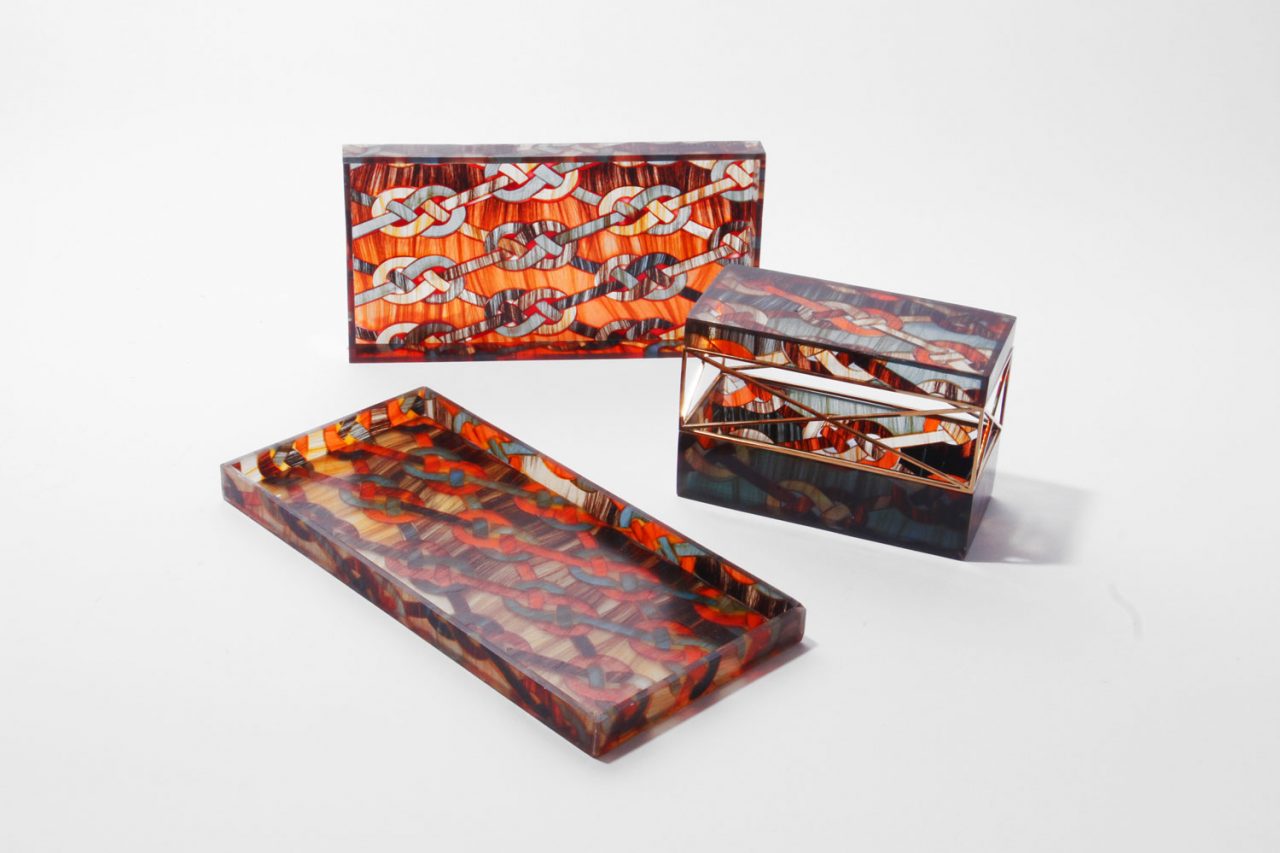Studio Swine
Re-Imagining The Possibility of Uncommon Materials

Design studio Studio Swine is easily unlike the rest. An exceptional, forward-thinking design duo based in London focussing on incorporating an element of nature in all of their designs. Husband and wife-duo Alexander Groves and Azusa Murakami first started Studio Swine (Super Wide Interdisciplinary New Explorers) in 2010, developing a progressive practice executing projects exploring the future of resources and materials in the context of globalisation and modern industrialisation.
Past works include ‘Hair Highway’ (2014), a curious example of alternative resources and innovative craftsmanship, with various objects made from human hair; and a groundbreaking concept with Fordlandia (2016), where Studio Swine sought to revive Henry Ford’s lost utopia in the Amazon Rainforest. The exploration of materials is an ongoing focus in their work, seen in their early work Metallic Geology (2014) where foamed aluminium was created by injecting a gassing agent when molten, resulting in a lightweight materials similar to volcano remains.


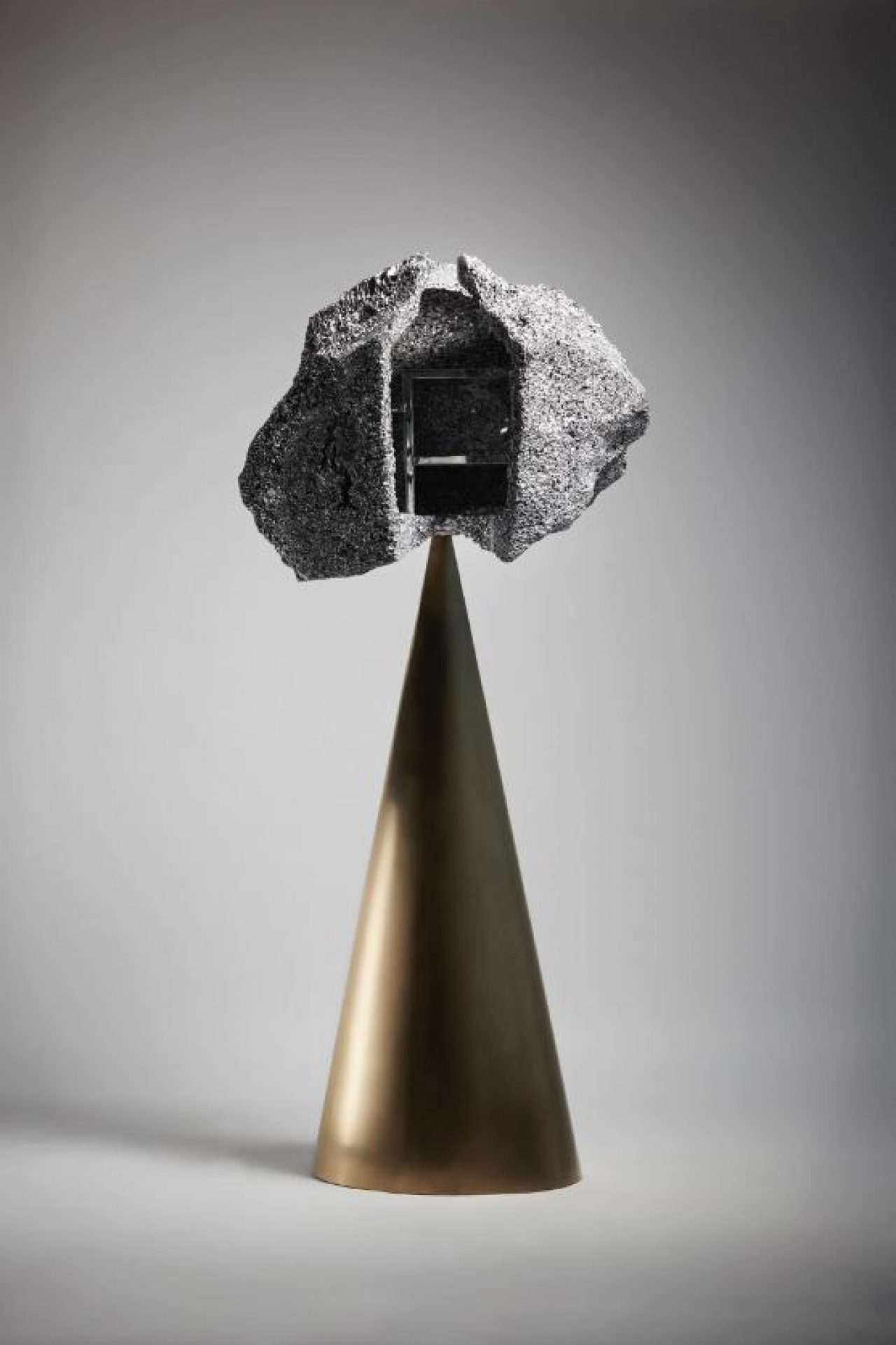
Gaining attention at this years Milan Salone, Studio Swine created perhaps the most attention-grabbing yet simplistic design, with their usual conscious responsibility to materials. For global fashion brand COS, their work New Spring inspired a whole new molecular curiosity with their immersive and ephemeral installation. Creating mist-filled temporary “blossoms” that burst upon contact with skin and bounce off certain fabrics, it is an ode to the ephemerality of the design week itself and nature itself. Utilising recycled aluminium for the tree-like structure dispelling the blossom bulbs, the design takes cues from Italian lighting; spherical bulbs and sweeping arched lamps inspired by form and function.
Champ Editor Monique Kawecki met with Studio Swine’s design duo Alexander and Azusa in Milan in March, to talk about their concept and research development behind projects, and their ongoing challenge to reimagine pre-existing views of aesthetically-pleasing and reputably-valued materials and objects.
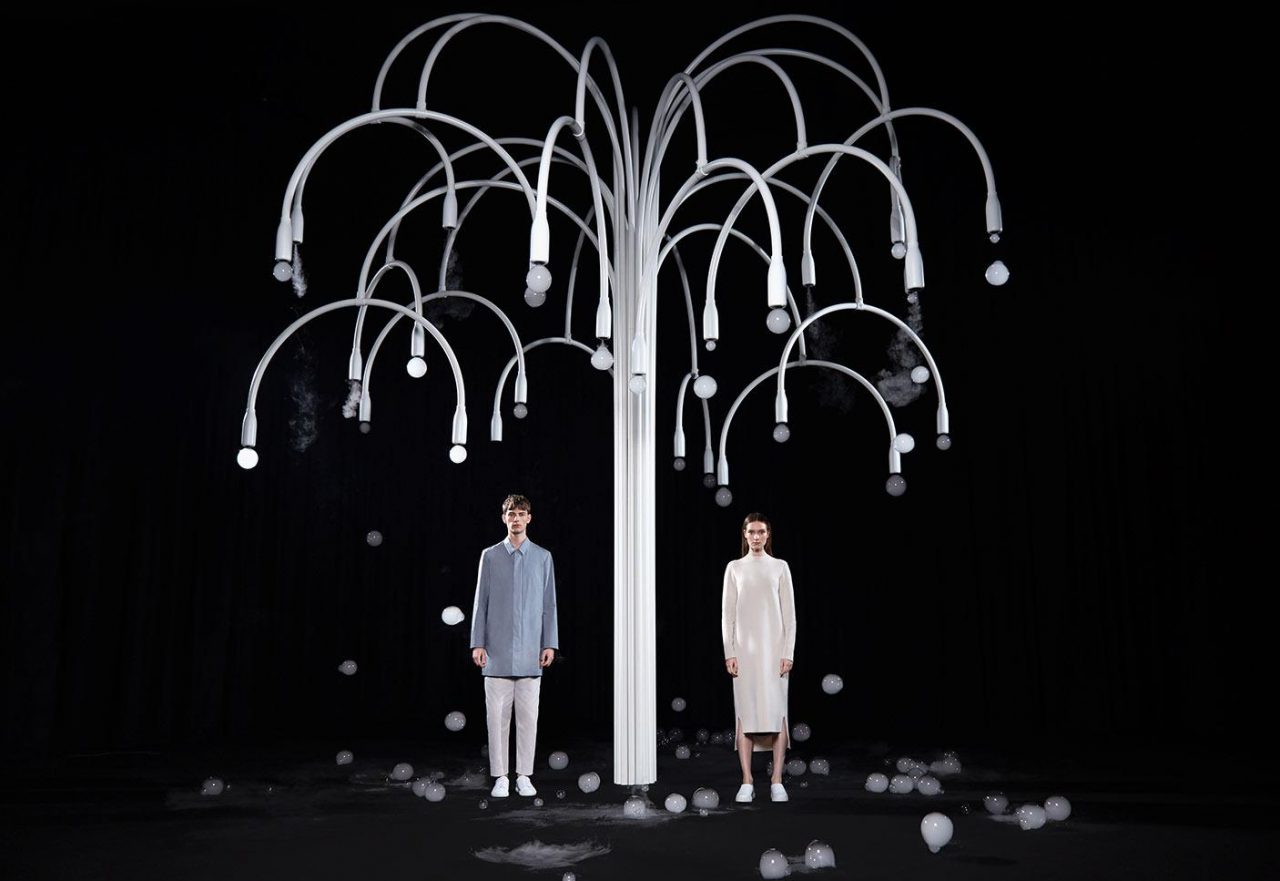
Starting with this installation here in Milan Salone, for ‘New Spring’ you’ve worked with bulbs of moisture. What sparked the interest to use this ephemeral material?
Our main inspiration was the cherry blossom, and because it is currently spring and reflects a type of wonderful inclusive experience that will only last one week too. It’s interesting because the bubbles bounce on fabrics in different ways and then burst on your skin, so there is this kind of interaction with the public and what they’re wearing as well which is quite fun. The bubbles have a kind of perfect geometry, they’re perfect spheres. They have a slight weight and balance, and these are the same things you can see in COS’ sensibility when they design garments; the geometric, minimalistic shapes and weighted balance. So it was kind of embodied in our piece.
The materials you work with are always somehow related to nature, such as your optical lenses made of hair, aluminium foam resembling lava stone, or even the way you incorporate recycled plastics too:
Yes, and even in Sao Paolo we used recycled cans for the Can City Project. We’re always interested in where materials come from, as we feel materials are sometimes an overlooked aspect of expression. You can express a lot through materials, and so we tend to not want to go down the cliché road of marble and brass, which are already very beautiful. They’re used a lot, so we try to find unusual things where we can talk about landscapes and expand the conversation. Although ocean plastic is a completely synthetic material, we were interested in the fact that we were gathering it from the sea, in the way that ancient mariners would gather various materials to make things.


I can see the connection between the cherry blossoms that have their own process of blooming and then returning back into their transient cycle, just like water. Is there a material that you’d like to explore that you haven’t yet worked with?
There’s quite a lot, and we still feel like we’ve got a lot to explore with rubber. We want to take our Fordlandia collection further, which is about amazonian rubber and amazonian materials. We discovered a lot on our trip to the amazon that we’d like to take further, such as the fish leathers. Other materials we’d like to explore further are flint, a really interesting material.
How do you approach your process of work, does the concept come first and then you find the appropriate material after?
It depends really, for instance, we first heard and discovered about Fordlandia back in 2011 when we were living in Sao Paolo, but at that time had no reason to go there. But in 2015 we discovered a material called Ebonite, and they both connected and created this project, Fordlandia. Sometimes the material comes first, sometimes the story comes first but they always match at some point.
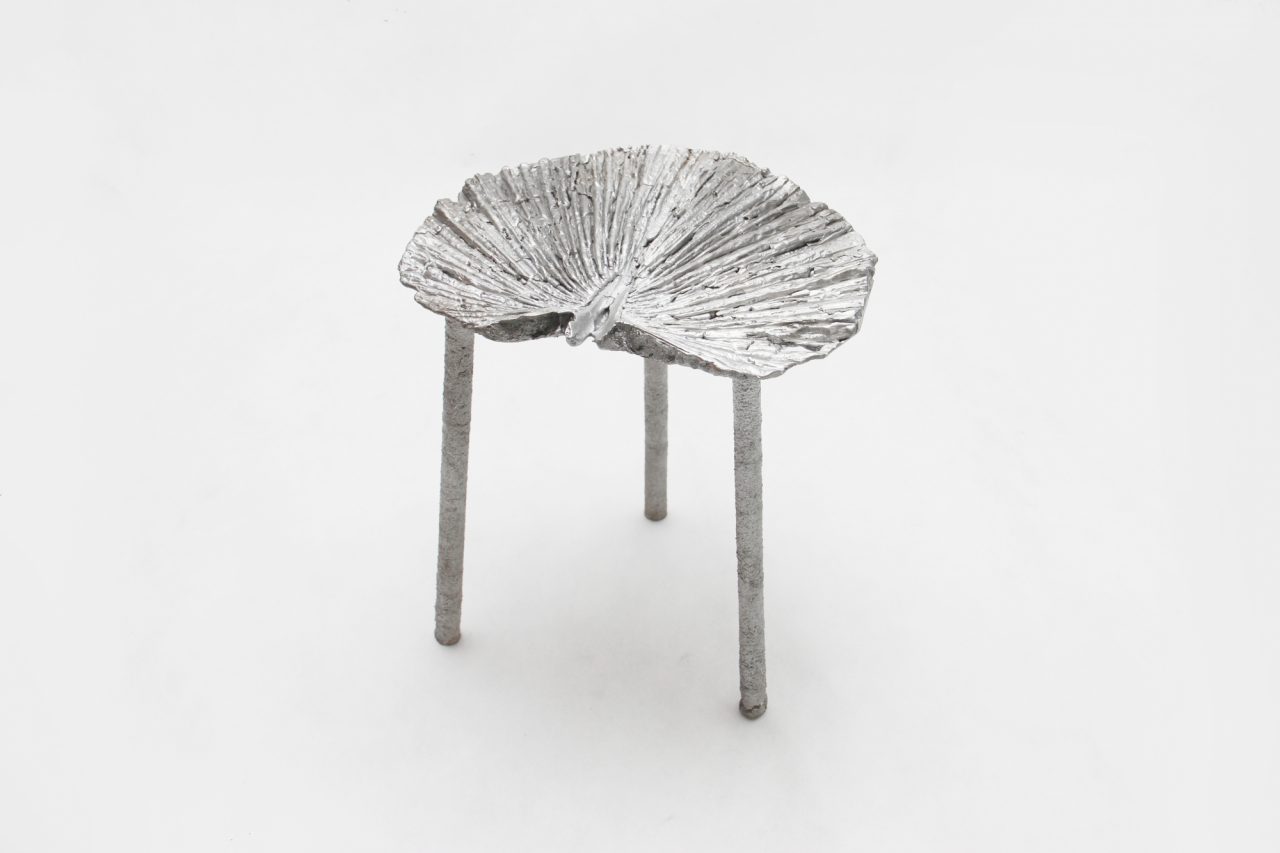
Regarding your exploration process, is it all done in your studio in London?
We work with a fabricator in London that has a large space, whereas our studio is a bit smaller and we can conduct our research there. Including our bubble solution recipes there.
What were some of the challenges for the New Spring project?
We had a very pure vision from the start, so to keep that on track with engineering and technological problems we had to overcome was a challenge. Bubbles are very delicate, and they are actually really hard to produce with a machine. You kind of underestimate that they’re so easy to make with a machine (children love to make bubbles all the time) but there’s a human touch required and only realise when you’re making a mechanical operation. There’s a lot of delicate movements and things you need for it to happen in a synchronised order.
How long was the process?
We were commissioned in October 2016, and began prototyping and then began making the piece in February 2017.
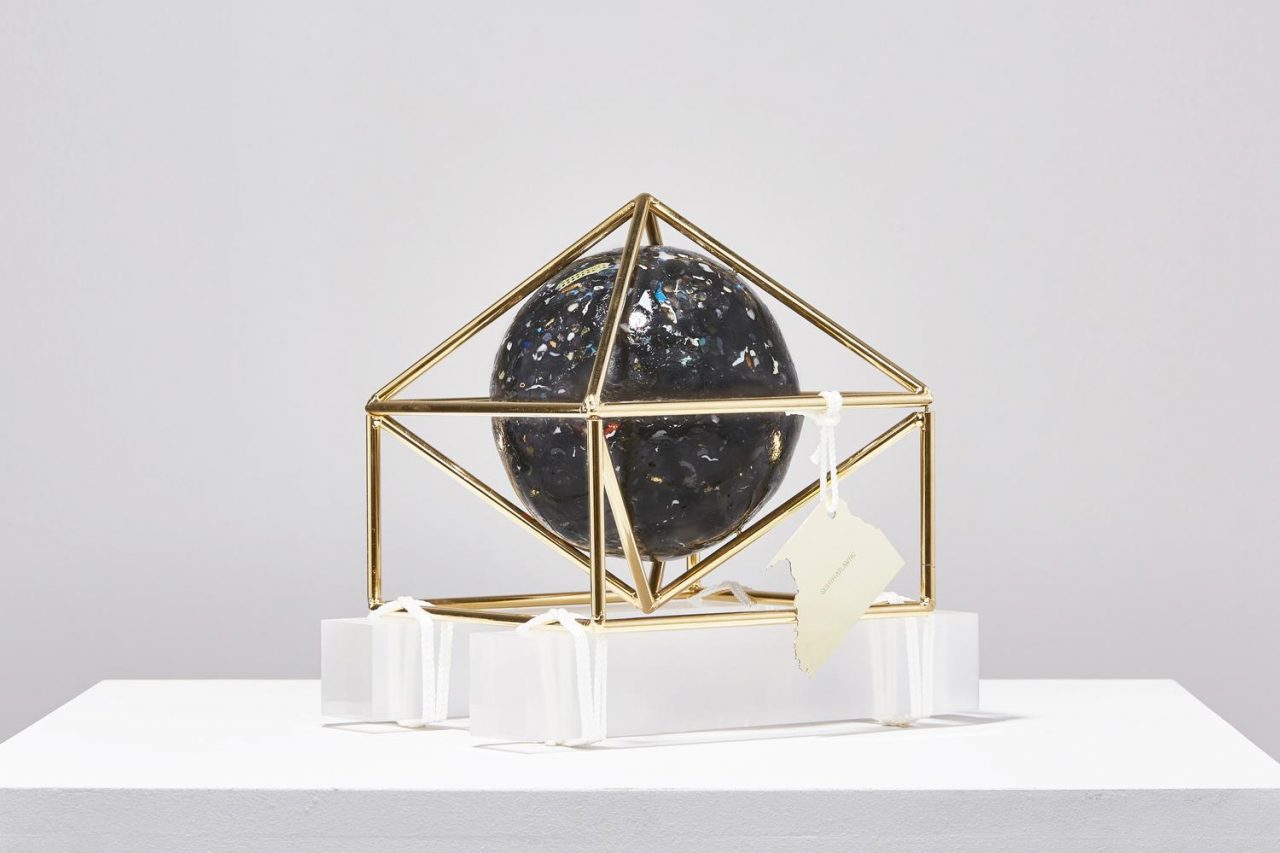
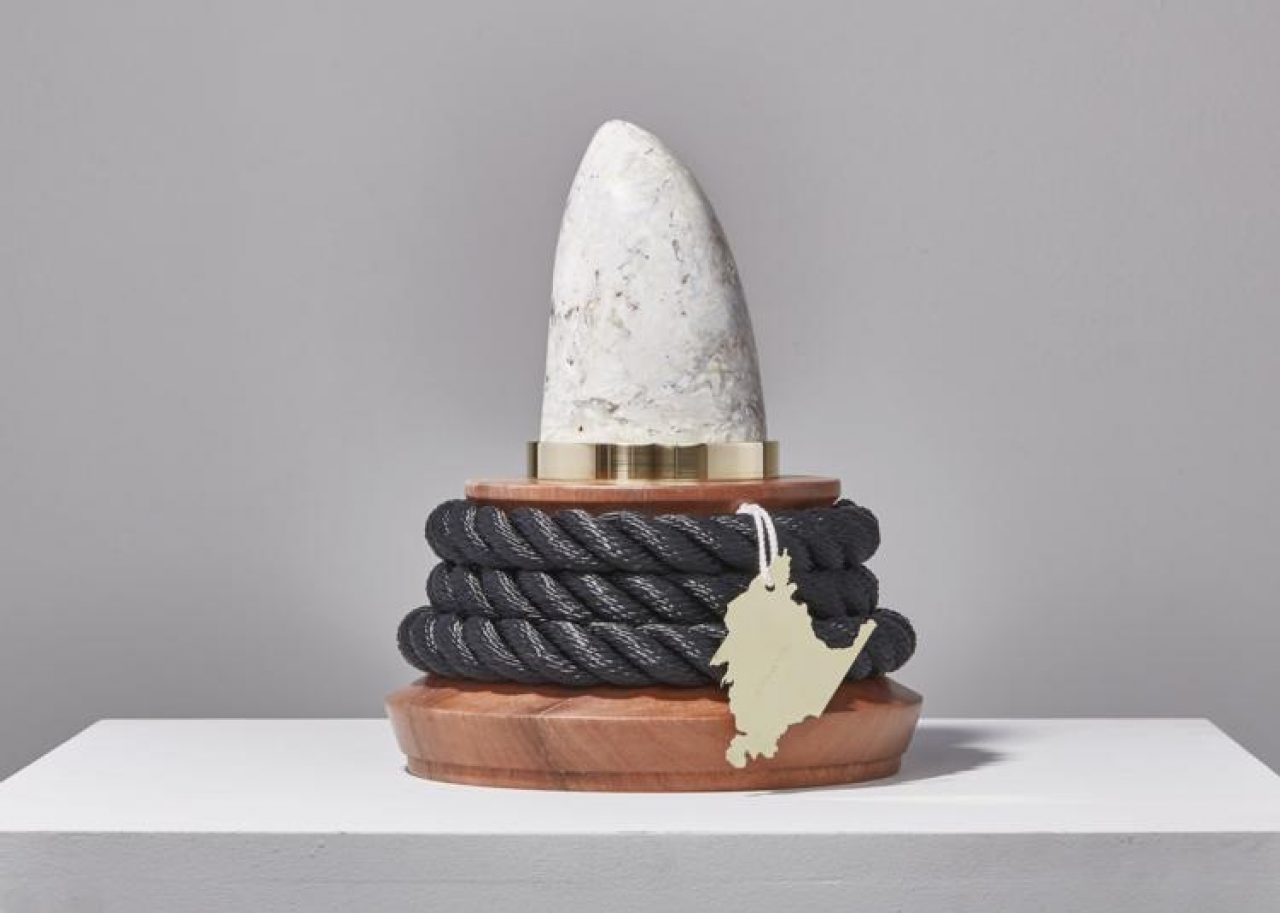
When the bulbs of water touch a persons skin they burst but stay connected with certain fabrics. How did you create this fascinating process?
A lot of experimenting and prototyping. We’ve gone through a lot of bubble solution with lots of different ratios and recipes that we could find online, and tested it to be strong enough to hold whilst it bounces on the clothes, but not too strong to clog up the mechanism. We also went through a lot of prototyping for the mechanism within the tree, and we created over 2000 custom parts for the installation. It was 3D printed, because there is currently nothing in the market that could currently do that.
You mentioned that designers are more often using marble or brass, which reminds us of your It’s Nice That film about ‘Failure’. Do you think you’re more adventurous to explore fabrics because of your studio structure, that you have more freedom?
We’ve designed a lot of freedom within our studio as there is only the two of us, so we’re very flexible to travel anywhere to do a project. We do have to fundraise to do our projects, but not as much as if you have a group of staff and studio to support. So there is a lot of flexibility in our practice. I think we’re very drawn to just do new things for the first time and innovate.
Because we kind of believe designers as being agent for transformation so we like the challenge of taking something undesirable and turning it into something desirable. Hence our name, ‘Swine’, we wanted to kind of flip the association. It’s seen as a negative byword, but actually they make fine parma ham, or fine truffles, that sort of thing. We also do love marble and brass, but it feels like the design challenge is not as much there as if you have a material that’s not already holding a value. Sustainability is a a good challenge to take on too, because its usually seen as quite dry and frumpy. We want to engage to engage with that view, that but at the same time make it exciting and aesthetically pleasing.
